Ditapis dengan
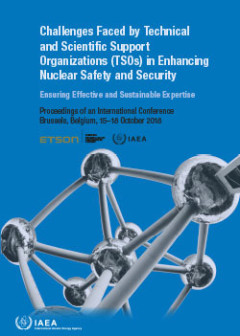
Challenges Faced by Technical and Scientific Support Organizations (TSOs) in …
The global nuclear safety and security framework (GNSSF) provides a conceptual structure and guidelines for achieving and maintaining a high level of safety and security at nuclear facilities and in nuclear related activities around the world. Technical and scientific support organizations (TSOs) play an essential role in sustaining the GNSSF by providing assistance to regulatory bodies in esta…
- Edisi
- -
- ISBN/ISSN
- 978-92-0-121021-0
- Deskripsi Fisik
- 258 p
- Judul Seri
- Proceedings Series - International Atomic Energy Agency
- No. Panggil
- 621.039.58 IAE c
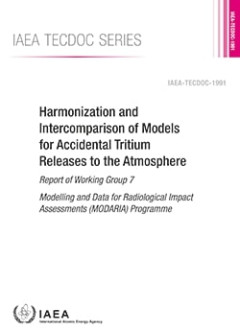
Harmonization and Intercomparison of Models for Accidental Tritium Releases t…
Models are essential tools in evaluating radiological impacts within the safety assessment process and regulatory control of facilities as well as of activities in planned exposure situations, existing exposure situations and emergency exposure situations. Modelling the transfer of radionuclides in the environment and assessing the resulting radiation exposure of people and the environment is n…
- Edisi
- -
- ISBN/ISSN
- 978-92-0-144221-5
- Deskripsi Fisik
- 148 p
- Judul Seri
- -
- No. Panggil
- 621.039.58 IAE h
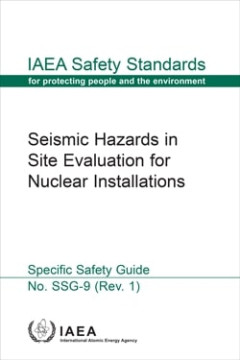
Seismic Hazards in Site Evaluation for Nuclear Installations: IAEA Safety Sta…
The IAEA’s Statute authorizes it to “establish…standards of safety for protection of health and minimization of danger to life and property”. These are standards that the IAEA must apply to its own operations, and that States can apply through their national regulations. Radioactivity is a natural phenomenon and natural sources of radiation are features of the environment. Radiation…
- Edisi
- -
- ISBN/ISSN
- 978-92-0-117921-0
- Deskripsi Fisik
- 77 p
- Judul Seri
- IAEA safety standards series
- No. Panggil
- 621.039.58
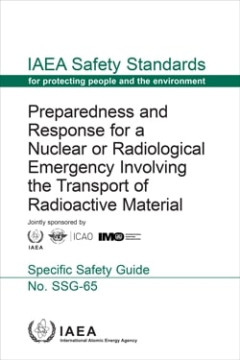
Preparedness and Response for a Nuclear or Radiological Emergency Involving t…
Radioactivity is a natural phenomenon and natural sources of radiation are features of the environment. Radiation and radioactive substances have many beneficial applications, ranging from power generation to uses in medicine, industry and agriculture. The radiation risks to workers and the public and to the environment that may arise from these applications have to be assessed and, if necessar…
- Edisi
- -
- ISBN/ISSN
- 978–92–0–127621–6
- Deskripsi Fisik
- 91 p
- Judul Seri
- IAEA safety standards series
- No. Panggil
- 614.876 IAE p
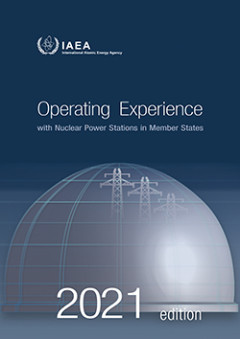
Operating Experience with Nuclear Power Station in Member States; IAEA/OPEX/2021
This report contains the 52nd edition of the IAEA’s series of annual reports on operating experience with nuclear power plants in Member States. It is a direct output from the IAEA’s Power Reactor Information System (PRIS) and contains information on electricity production and overall performance of individual plants during 2020. In addition to annual information, the report contains a hist…
- Edisi
- 2021
- ISBN/ISSN
- 1011-2634
- Deskripsi Fisik
- 1619p.: illus.; 26cm.
- Judul Seri
- IAEA/OPEX/2021.
- No. Panggil
- 621.48 IAE O
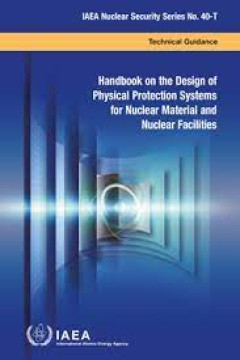
Handbook on the Design of Physical Protection Systems for Nuclear Material an…
This publication provides comprehensive detailed guidance for States, competent authorities and operators on how to implement the recommendations and implementing guidance of existing IAEA Nuclear Security Series publications for an effective physical protection system (PPS) for nuclear facilities and nuclear materials in use and storage. It provides further technical detail on how to design an…
- Edisi
- 2021
- ISBN/ISSN
- 978-92-0-100120-7
- Deskripsi Fisik
- 200 p
- Judul Seri
- IAEA Nuclear Security Series No. 40-T
- No. Panggil
- 621.039.58
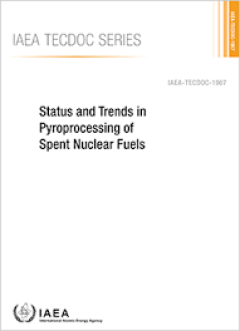
Status and Trends in Pyroprocessing of Spent Nuclear Fuels: IAEA TECDOC No. 1967
The importance of recycling the spent nuclear fuel through partitioning processes has been recognized worldwide for increasing and sustaining nuclear energy. Therefore, the development of advanced partitioning processes, based either on hydrometallurgical or on pyrometallurgical technologies, has received an increasing interest in recent years. Moving towards industrial demonstration, partition…
- Edisi
- 2021
- ISBN/ISSN
- 978-92-0-122821-5
- Deskripsi Fisik
- 150 p
- Judul Seri
- -
- No. Panggil
- 363.7289 IAE s
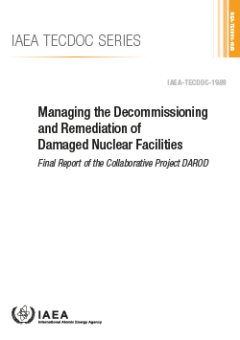
Managing the decommissioning and remediation of damaged nuclear facilities - …
In response to the accident at the Fukushima Daiichi nuclear power plant in March 2011, the IAEA developed the IAEA Action Plan on Nuclear Safety. One of the objectives of the plan was to ensure that, following a nuclear emergency, people and the environment are protected from ionizing radiation. One of the activities undertaken to address this objective was the International Project on Mana…
- Edisi
- 2021
- ISBN/ISSN
- 978-92-0-142521-8
- Deskripsi Fisik
- 136 p
- Judul Seri
- -
- No. Panggil
- 539.7 IAE m
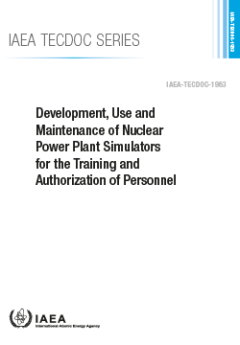
Development, Use and Maintenance of Nuclear Power Plant Simulators for the Tr…
The use of simulators for the training and qualification of nuclear power plant (NPP) control room operating personnel has become a standard practice throughout the world to develop and reinforce knowledge of plant systems and their relationships. It is an approach to increase the ability to apply plant procedures, to advance practical skills in operating the plant in normal, abnormal and emerg…
- Edisi
- 2021
- ISBN/ISSN
- 978-92-0-121121-7
- Deskripsi Fisik
- 182 p
- Judul Seri
- -
- No. Panggil
- 621.312 IAE d
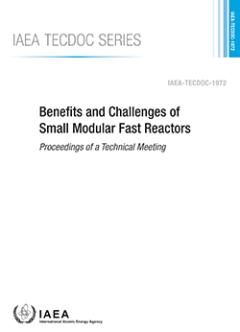
Benefits and Challenges of Small Modular Fast Reactors: IAEA TECDOC No. 1972
The IAEA ussually defines small and medium sized or modular reactors (SMRs) as reactors producing up to 300 MW(e) (small sized or small modular) and reactors producing 300-700 MW(e) (medium sized). There has been increasing interest in SMRs globally owing to their variois benefits, such as flexible power generation options, the wide range of applications, enhanced safety resulting from inherest…
- Edisi
- 2021
- ISBN/ISSN
- 978-92-0-124121-4
- Deskripsi Fisik
- 362 p
- Judul Seri
- -
- No. Panggil
- 621.483 IAE b
 Karya Umum
Karya Umum  Filsafat
Filsafat  Agama
Agama  Ilmu-ilmu Sosial
Ilmu-ilmu Sosial  Bahasa
Bahasa  Ilmu-ilmu Murni
Ilmu-ilmu Murni  Ilmu-ilmu Terapan
Ilmu-ilmu Terapan  Kesenian, Hiburan, dan Olahraga
Kesenian, Hiburan, dan Olahraga  Kesusastraan
Kesusastraan  Geografi dan Sejarah
Geografi dan Sejarah